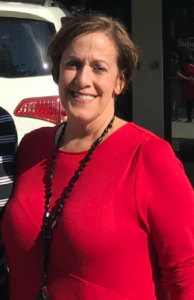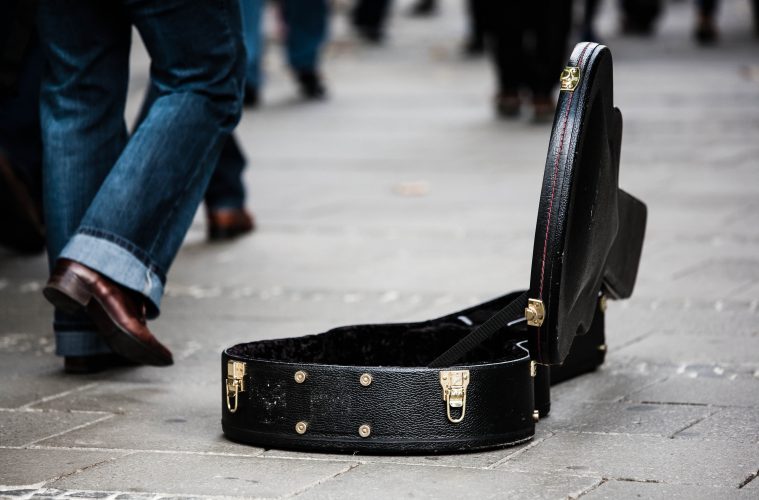Make the experience better for customers.
Offer lessons, rentals and repairs.
You’ve probably heard both pieces of advice quite often regarding how to boost sales at your store. In most instances, this advice is definitely solid. But there is still a traditional yet effective way to increase sales: add-on items. So, we take a look at these add-on sales via an update on the bags and cases market, as well as a look at accessories.
Joining us are Susan Cavanaugh, executive vice president, Super-Sensitive Musical String Co.; Gator Cases CEO Crystal Morris; Jeremy Payne, national account manager The Music People; Dave Lopez, national sales manager, Odyssey Innovative Designs; Ken Kucharic, purchasing agent, Yorkville Sound; and a collaborative effort by MONO’s design team.
Let’s start with the bags and cases market. We asked our panelists about their process when designing these products. What’s the most important goal they are trying to accomplish?
“The No. 1 mission for us is always ensuring we are protecting someone’s gear and making it easy for them to transport it. It is almost like the less they have to think about us, the better the job we are doing. They are confident with buying a Gator product, their gear is safe and they can get to playing,” said Morris.
“Sturdiness and dependability were definitely top considerations when putting together [Yorkville’s] Rouge Valley line,” added Kucharic. “High-quality global features, regardless of price point, such as 400D nylon, heavy-duty zippers and secure stitching, were primary concerns. Once those features were established, we began building the corresponding feature sets for each price point.”

‘Our series of cases for Rane’s new model 12 Controller and model 72 Mixer are selling extremely well. Both of these Rane products are hot, and we’re thrilled and proud that customers are choosing our cases to protect their valuable equipment.’ — Dave Lopez
“The design of the product must fill a need/application,” stated Lopez. “The purpose is to build bags/cases that improve the enduser’s job requirement; a product that makes the customer’s life/ gig easier. And it’s got to look cool and be stylish, too.”
Said the MONO team: “For [us], the most important design element is solving the real-life problems of creators. Our designs are the result of working closely with experienced creators and artists who travel and tour with our cases all over the world. We design with their experiences in mind and are constantly looking for ways to introduce more enhancements, greater utilitarian functionality and extra thoughtful details — which make their lives easier.
“Last year, we developed the Stealth Electric Guitar Case, a timeless design that responds to the modern urban lifestyle,” MONO added. “Improving the shoulder and back-padding supports makes the electric guitar inside feel almost weightless; quick access to hidden pockets allows you to access everyday items quickly. Even with all these new features, we make sure we never compromise on our core product values when designing the cases: to protect your musical instrument on the go.”
The health of MI can be judged in many ways. One way is to see what types of bags and cases — in terms of MI segment — are selling well.
“Initial research indicated that about 85 percent of our overall bag sales are guitar and ukulele bags,” responded Kucharic. “So, our first step in development was clear. Top sellers in these two categories are acoustic dreadnaught and soprano uke, respectively. They are accessible instruments from an economic and a playability perspective and, of course, the school uke programs put a lot of soprano ukes into kids’ hands.”
“Our series of cases for Rane’s new model 12 Controller and model 72 Mixer are selling extremely well,” noted Lopez. “Both of these Rane products are hot, and we’re thrilled and proud that customers are choosing our cases to protect their valuable equipment.”
“We continue to expand in solutions for carrying the audio gear that supports the backline,” said Morris. “A bit of the unsung hero, but moving microphones, speakers etc., around is just as important as the traditional instruments. For example, we just launched a new wireless microphone bag designed to carry two units.”
We followed that up by asking each participant what their hottest-selling bag or case is.

‘The No. 1 mission for us is always ensuring we are protecting someone’s gear and making it easy for them to transport it. It is almost like the less they have to think about us, the better the job we are doing.’ — Crystal Morris
“The Vertigo Series is our most popular range. It is our flagship hybrid case range with maximum protection from top to bottom,” answered the MONO team. “From military-grade materials, to our trademarked Boot and headstock lock, it completely protects your musical instrument.”
“The Transit series we launched last year has been an amazing success. The combination of style and functionality has been extremely well received, and we are continuing to build out the line beyond guitar. We just released a new series of general accessory bags that are great for cables, pedals etc., following this same design cue,” said Morris.
“Our introductory 100 series has easily established itself as the top seller of the three available series,” noted Kucharic. “It seems to strike just the right balance between quality features, price point and, of course, aesthetics. It’s done very well for us.” “For both cases and bags, it is just about anything DJ-controller related,” concluded Lopez.
Trend Setters
What are some bags/cases trends that may affect sales and hence product selection at MI retail stores?
“Bags with more functionality; cases built with lighter materials, but that are still strong and durable enough to protect the gear, and are functional during a performance,” said Lopez.
“We continue to see the consumer moving away from hard cases and more into well-padded bags,” responded Morris. “Today’s bags can offer very similar protection while being lighter and easier to move around.”

‘I can definitely see more integration of technology, such as tracking software that allows you to find your gig bag with your phone in the event of theft or misplacement.’ — Ken Kucharic
“I can definitely see more integration of technology, such as tracking software that allows you to find your gig bag with your phone in the event of theft or misplacement,” answered Kucharic.
“As we are in a fast-paced urban area, we design for simplicity and ease,” said the MONO team. “It doesn’t mean removing everything. It’s all about how each product is considered thoroughly during our design processes — how we implement all the essential features for each case, designing them to look effortless and clean, without compromising on function.”
Now that you know what trends are shaping the bags/ cases industry, let’s find out what advice our panelists have for MI retailers when selling bags and cases.
“I believe the No. 1 thing a retailer can do is merchandise the bags and cases,” stated Morris. “Get them on the floor, near the products they are designed to carry. Train the sales staff to talk about them. Online retailers should merchandise on the primary product pages, helping to show the customer what case matches up.”
“Educate customers on the importance of protecting their investment,” said Lopez. “Whether it’s one of our top-of-the-line Flight Zone Series cases or an entry-level gig bag from our entry-level Streemline Series, the customer’s equipment needs to be protected. There is no worse feeling than showing up to a gig with busted gear, the result of inferior product cases that are on the market. Dealers often forget to point out to their customers that a case is a necessity, not an accessory.”
“The quality of a MONO case speaks for itself,” said the MONO team. “We give a great guarantee because we know we build products to last. We have different unique selling propositions for each design style, in order to cater to different user preferences. Our M80 Classic Series focuses on comfortable storage, the M80 Vertigo Series offers maximum protection, while our new M80 Stealth Series caters to urban commuters. They respond to real musicians’ lives, so you can chat with your customers to find the best MONO M80 fit for them.”
We conclude the bags and cases section of this story with a sneak preview of what the manufacturers expect to debut at the upcoming NAMM Show in January.
“We constantly get product requests and feedback from musicians,” responded the MONO team. “These valuable insights help us to identity current needs in the market. We’ll have a few great new pieces coming out at NAMM. Hint: Acoustic players are going to be happy… and so will other creative types. Watch this space!”
“Now that the guitar and uke bags are finalized and shipping, we are able to diversify our product line,” said Kucharic. “We just received our first shipment of drum hardware bags, and we couldn’t be happier with the result. In recent cross-country and local product seminars, the response was overwhelmingly positive.”
“We do have a number of cool products to introduce at NAMM, but we’re going to hold off on making any announcements about them at this time,” noted Lopez. “But we feel very confident that the dealers are going to be excited about them and thrilled at the sales potential.”
“We have a lot of exciting new products slated for Winter NAMM. These range from expanded band and orchestra offerings to new stands,” concluded Morris. “We also are highly focused on Levy’s Leathers now being part of the Gator family with new straps, strap locks and expanded accessory offerings.”
Accessory to a Sale

‘I would say that the one thing that is having the most impact on the accessories market would have to be the acceptance and adoption by retailers of online marketplaces.’ — Susan Cavanaugh
Now, on to accessories. We start off by looking at some of the trends affecting this market.
“I would say that the one thing that is having the most impact on the accessories market would have to be the acceptance and adoption by retailers of online marketplaces,” said Cavanaugh. “This can be used to brick-and-mortar stores’ advantage if they have a solid ecommerce plan in place. The ever-growing uncertainty of the United States’ foreign trade policies will definitely impact where accessories are made and sold.
“Another less significant yet important consideration would be the inclusion of arts within elementary through high schools,” she added. “As funding within schools increases as a result of the economic uptick, so will the desire and ability to purchase accessories.”
“I think the biggest-picture trend is that consumer confidence is up across the board, and both brick-and-mortar as well as ecommerce MI companies seem to be enjoying that upward movement,” answered Payne. “If any given larger category is up, like acoustic guitar, then related accessories always seem to follow suit, so it really comes as no surprise that our accessory business is rocking right now. That said, even in a down market, accessories seem to flourish; players might not be able to buy a new guitar when times are tough, but they need certain accessories to use their existing gear. I think I also have to address the big elephant in the room: the U.S. import tariff situation. No matter how any given company handles the situation, this is a significant disruption. We feel positive about our approach as we started planning early on. Hopefully, others have done the same to try and mitigate any significant changes during the fourth quarter.”
As for hottest-selling accessories, “Our stands are the backbone of our business and are selling well in all varieties,” answered Payne. “For stands, most categories are up over last year: guitar stands, mic stands, keyboard stands, speaker stands, music stands, etc. Outside of that, pro audio and technology-related accessories are particularly selling well (tablet- and laptop-mounting solutions especially). With pro audio gear in mind, we often live by the mantra: ‘If it clamps on a mic stand, it will sell.’ We live in a world where people are trying to be super efficient with most things in their lives, and for musicians, their gear is no different. People want to keep their gear close at hand and bring as little as possible, so anything that shrinks someone’s setup while keeping it efficient is hot right now. For example, we have a modular mic stand, the GPA1003, that neatly tucks under a pedalboard and provides three mounting points to hold any combination of mics, guitars, speakers or other performance staples. Its footprint is a mere 18 inches by 10 inches. So, a solo acoustic street performer can have their guitar stand, mic stand and speaker stand all in one compact little unit. These kinds of little problem solvers are a big part of our brand identity and are selling well. Band and orchestra seems as strong as ever, and the related accessories are also doing well.”
“Our Spector Violin mute, Super-Sensitive Dark rosin and Bowmaster,” added Cavanaugh, regarding hottest-selling accessories.
Next, we asked what trends are shaping the accessory industry.
“Anyone denying that the electronic music category is not getting substantially bigger is kidding themselves,” said Payne. “Performers and recording artists for this category need their devices supported with accessories that make their lives easier and more enjoyable, so I think that’s important for suppliers and retailers to keep in mind. We all have an instrument in our pocket that can work into any type of music: our phone. Phones are becoming a bigger and bigger part of making music, and we need to pay close attention to this. We’re a stand company, so the first thing that comes to mind for a phone accessory is a mount.

‘I think the biggest-picture trend is that consumer confidence is up across the board, and both brick-and-mortar as well as ecommerce MI companies seem to be enjoying that upward movement.’ — Jeremy Payne
“To MI retailers: Do you stock a mount that will fit everyone’s phone on the market? Will it fi t on a mic stand, a music stand, a cymbal stand and so on? Don’t leave your customer high and dry,” Payne added. “Make sure you have all the options they could be looking for. Think about phone cases. You go by a kiosk in a mall, and there are literally hundreds if not thousands of options. Style aside, there are cases with built-in kick stands, wallets, holders, chargers and so on. If you were a phone case retailer and only stocked a couple of options, you’d likely be out of business pretty fast. In our industry, I think we need to make sure we’re addressing the needs of all the varieties of musicians and how they could possibly use a phone in making music. By physically having our phones accessible in a performance, writing or recording situation, we’ll discover new ways of utilizing phone technology in music making. Right now, we see phone technology opening doors for us as musicians, and we are happily walking through them, but it would be really nice to see our industry’s app and technology developers set the bar for the phone industry to accommodate the future of music making with phones. The camera industry did it, why shouldn’t we? Is it so far out to think that we’ll be creating instruments that require a phone to be the brains of the operation?”
“People love gadgets,” added Cavanuagh. “They have to keep their hands busy. For example, fidget spinners were extremely popular at one time.”
In addition to bags and cases, accessories are a tremendous source of additional income for MI retailers. We asked our two accessories panelists to provide any possible tips to help you get that accessory sale.
“Accessories should be strategically placed for impulse purchasing,” noted Cavanaugh. “Ideally located near the cash register/checkout. Also, accessories should be an added benefit/value to a larger purchase. The accessory should complement the larger purchase. For example: If a person purchases a violin bow, the clerk should add on a rosin and maybe even at a discounted rate.”
“Stock them!” said Payne. “I know that sounds stereotypical of a manufacturer salesperson, but we are living in a market where end users want it today, and if not, tomorrow. If you don’t have it in stock, the consumer’s next stop will be a search engine, and they’ll find a source that can deliver tomorrow. I worked in a retail shop before I came onboard at On-Stage, and we had walls and walls of beautiful guitars. However, by investing so heavily in higher-ticket items, we often were left with a bare-bones budget for accessories. I cannot tell you the number of times someone came in looking for a specific type of strings, picks, stands, cases, etc., and we had to resort to the old ‘No, but we can order it for you’ approach. I get it, you can’t stock everything. But in my experience, and hindsight being 20/20, accessories should come first on your priority list. If you don’t have the accessories that allow a musician to practice their craft, you are proving to not be a reliable resource for them. If you let a customer down a couple times, they might not come back as often or ever again, which means you’ll never make the big sale. Be a hero to your customer and have the best variety of accessories in your area. Try to make a point of bringing in a few new accessories every purchasing cycle; you’ll always have something new and exciting to show your regulars. Most accessories in our industry come in under $20; even if you invest in 200 unique SKUs and only have one or two of each, you’re investing less dollars than you would in a single mid-to-high-end instrument.”
Although it’s early to get manufacturers to reveal their new offerings at January’s The NAMM Show, we asked anyway.
“Clarity Spectrum’s new colorful packaging,” answered Cavanaugh. “Without spilling too many beans, we’re just expanding our existing line,” concluded Payne.
“Adding a few more things to case/bag world, new and improved versions of existing stand products, some guitar-related accessories, some audio-related accessories, keyboard-related accessories, band-and-orchestra-related accessories. A little bit of everything is being added to the lineup. 2019 is our 40th anniversary, and we certainly won’t be disappointing with our new product offerings.”


